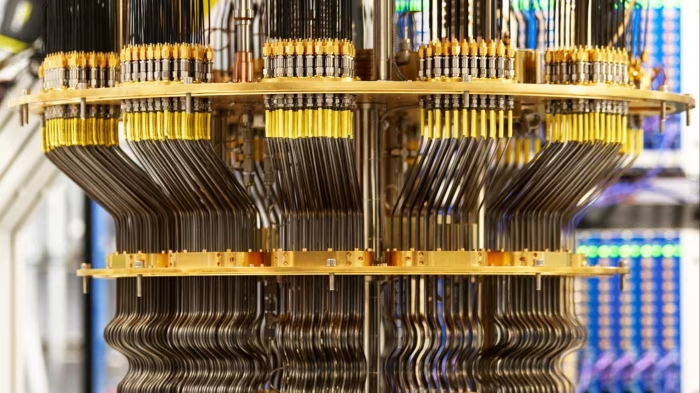Unlock the Editor’s Digest for free
Roula Khalaf, Editor of the FT, selects her favourite stories in this weekly newsletter.
The writer is senior vice-president for research, labs, technology and society at Google-Alphabet
Quantum computing able to harness the subatomic world may seem like a distant prospect to some people. This misapprehension persists despite recent research breakthroughs, many built on the foundational research of 2025 Nobel laureates John Clarke, Michel Devoret, and John Martinis. But quantum computers are already being used for scientific research and real-world applications appear likely to emerge in the near future, even before we get to the goal of large-scale, error-corrected computing systems.
Estimates of how long it will be before we can use quantum computing in ways that will affect most people’s lives vary from a few years to decades. Rather than a single light-switch moment when we shift all at once from not having a quantum computer to having one, it’s more likely that we will follow a more gradual quantum continuum as the systems increasingly become useful.
A helpful way to think about this stage of quantum development is something akin to artificial intelligence in 2010, when neural networks were on the cusp of becoming useful but before advances like protein structure predictor AlphaFold or generative AI chatbots.
Quantum technology holds the promise of solving difficult problems, helping us to learn the structure of quantum systems, from molecules to magnets to black holes.
Similar to early neural networks, quantum computing is already proving useful as a platform for research and experimentation. For example, researchers such as Misha Lukin at Harvard have used them to uncover new phenomena like many-body quantum scars, which reveal order embedded within quantum chaos.
We are also starting to see the potential for real-world applications with quantum advantage (ie problems that quantum computing can solve that are beyond the reach of classical supercomputers), which can advance areas like drug discovery and material science.
We are making progress on quantum computing itself: Google’s quantum processor ran in minutes a benchmark algorithm that would take today’s fastest supercomputers 10 septillion years (a period of time that vastly exceeds the age of the universe). More significant was the demonstration of “below threshold” error correction — a long-standing challenge in the field. Last week, we published the first algorithm with verifiable quantum advantage on hardware and in proof-of-principle experiments with the University of California, Berkeley, found it could be used to understand molecular structure when combined with a common chemistry technique.
Researchers and mathematicians have highlighted at least 70 algorithms — from mathematics and data science to simulation and machine learning — that could allow quantum computers to solve problems much faster than classical ones in a wide range of useful areas. One that has captured public attention since its discovery in the 1990s is Shor’s algorithm, which is expected to be capable of cracking much of the encryption used by today’s most advanced communications systems and digital networks.
While not imminent, here too we are closer than public perception might acknowledge. This year there was a 20-fold decrease in the estimated size of the quantum computer needed to run Shor’s algorithm and crack the widely used RSA-2048 encryption. This shortened timeline underscores the importance of migrating to new, post-quantum cryptography standards, such as those released by the US National Institute of Standards and Technology last year.
Within five years we are likely to start to see real-world applications become possible, even before we get to a large-scale error corrected quantum computer. In order to be prepared to capitalise on these developments, different sectors have the opportunity to lay the groundwork now.
For governments, that might look like investments in quantum infrastructure such as cryogenic cooling systems, specialised electronics and quantum-ready networks. For businesses, it may be determining how the technology might be useful to their respective industries, for example accurate simulation of molecules in the creation of batteries for electric carmakers, or fusion power for the energy industry.
Individuals should consider how quantum might influence their own careers. We’ll need more specialised engineers (including electrical, mechanical, systems and software engineers), technicians, and applications developers. For anyone thinking about the jobs of the future, these are the fields that could be areas of potential opportunity.
